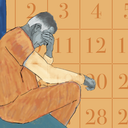
In the second and third videos of The New York Times’ three-part series, “The Fallibility of Justice,” Brett Malone, whose mother’s killer remains on Louisiana death row, and Texas death-sentenced prisoner Charles Don Flores provide their perspectives on capital punishment. The New York Times has consistently called for abolition of the death penalty, describing it as “full of bias and error, morally abhorrent, [and] futile in deterring crime.”
Mr. Malone describes his personal journey from wanting vengeance, and from seeing the person who killed his mother be tortured, to now wanting to “save his life” by supporting a commutation of Jeremiah Manning’s death sentence to a term of life without parole. He attributes his path towards forgiveness to the family’s “moral compass,” his grandmother Mimi. “For there to be healing, there has to be mercy. Killing Jeremiah will not bring us any closure. It will not heal the wounds that were created,” said Mr. Malone. “Rather, that action by the state will result in more harm and more pain and more suffering and not just for my family but for his family, which is something that people forget about.” Mr. Malone views the state executing Mr. Manning as “taking away any opportunity for repairing the damage that’s been done.”
“You have to be fair before you take someone’s life. And that’s the evil of the death penalty,” said Mr. Flores, whose legal team is planning on filing a request for a new trial based on detectives’ use of the now inadmissible technique of forensic, or investigative, hypnosis, whereby an eyewitness is hypnotized to allegedly recall or clarify memories. Mr. Flores was convicted as an accomplice under the state’s law of parties’ statute and sentenced to death based on the eyewitness testimony of Jill Barganier, who failed to select Mr. Flores — who did not fit her initial description of the perpetrators — out of a photo lineup. After 13 months, during which time she saw Mr. Flores’ image on the news and underwent hypnosis, Ms. Barganier testified in court that Mr. Flores was indeed the second perpetrator. Critically, there is no other evidence, forensic or otherwise, that ties Mr. Flores to the crime. University of California San Diego Psychology Professor John Wixted, whose research on eyewitness testimony is referenced in this case, told Kera News that Ms. Barganier’s initial failure to identify Mr. Flores is indicative of his innocence. “We’re not just impeaching the witness’ testimony,” he said. “We’re talking about new, substantive evidence of innocence that was never considered by anybody, and now he’s out of appeals and heading for execution.”
In an August 11 op-ed published in the Austin American-Statesman, retired judge Elsa Alcala and Texas Defender Services’ (TDS) Director of Special Projects Estelle Hebron-Jones explain how the implementation of the Texas’s junk science law, enacted in 2013 as the first of its kind nationwide, has “fallen disturbingly short in practice.” Highlighting findings in a recent TDS report, the op-ed explains that 80% of people seeking relief under this law, which established a procedure for prisoners convicted on the basis of flawed forensic evidence to seek new trials, have lost their appeals despite “incredibly compelling claims backed up by scientists and other experts.” The two conclude by urgently calling for change: “For innocent people, the consequences of leaving the law as-is can mean enduring years of unjust punishment or — as in the case of Mr. Roberson — facing the irreversible penalty of death. … The past ten years have shown that the junk science law is not working as intended. We hope that during this next session, the Texas legislature will take action to protect the innocent.”
In the first video in The New York Times’ trilogy, lead detective in Mr. Roberson’s case, Brian Wharton, explains how the investigation centered on the now-debunked theory of shaken baby syndrome and why he now believes Mr. Roberson to be innocent. “We as human beings are incapable of producing the kind of fairness and justice required to take someone’s life,” said Mr. Wharton, who now believes that the death penalty should be abolished. Mr. Roberson is scheduled to be executed on October 17, 2024.
Kirk Semple and Adam Westbrook, Junk Science Put Me On Death Row. I Shouldn’t Die., The New York Times, August 12, 2024; Brett Malone, He Killed My Mom. He Shouldn’t Die., The New York Times, August 5, 2024; Elsa Alcala and Estelle Hebron-Jones, State lawmakers can fix Texas’ broken junk science law and protect the innocent, Austin American-Statesman, August 11, 2024; Amber Dance, Scientists are fixing flawed forensics that can lead to wrongful convictions, Science News, June 6, 2024; Toluwani Osibamowo, Recent research on eyewitness memory may be Texas death row inmate’s last hope, Kera News, April 24, 2024;

